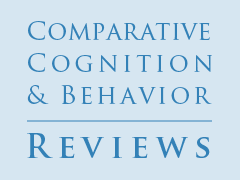Comparative Vision Science: Seeing Eye to Eye?
by Fabian A. Soto,
University of Iowa
Edward A. Wasserman,
University of Iowa
Reading Options:
Download/Read PDF | Add to Endnote
Abstract
In the study of comparative cognition and perception, disparities in the diverse approaches that researchers take in studying behavior sometimes obscure the interpretation of a particular empirical finding. The authors describe their approach to the comparative study of perception and cognition, which focuses on explaining the ways in which different biological systems solve the computational challenges that are posed by their natural environments. Within this framework, the task of detecting correspondence between a three-dimensional object and its two-dimensional photographic representation falls outside the mainstream of most research in animal visual cognition and is of limited value for divulging the principles or mechanisms that underlie the visual abilities of animals. More productive pursuits seek to elucidate the principles and mechanisms of object recognition and categorization.
Keywords: comparative cognition, comparative vision, environmental tasks, natural images, object recognition and categorization
Soto, F. A., & Wasserman, E. A. (2010). Comparative vision science: Seeing eye to eye?Comparative Cognition & Behavior Reviews, 5, 148-154. Retrieved from https://comparative-cognition-and-behavior-reviews.org/ doi:10.3819/ccbr.2010.50011
